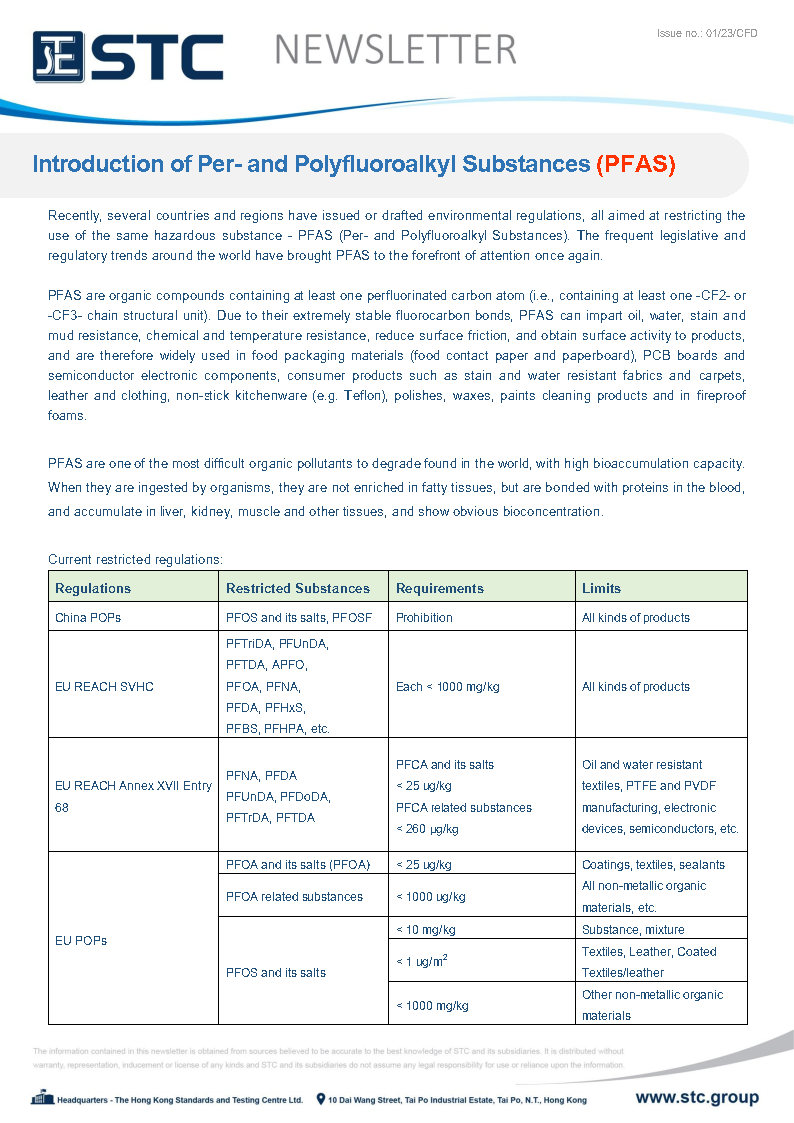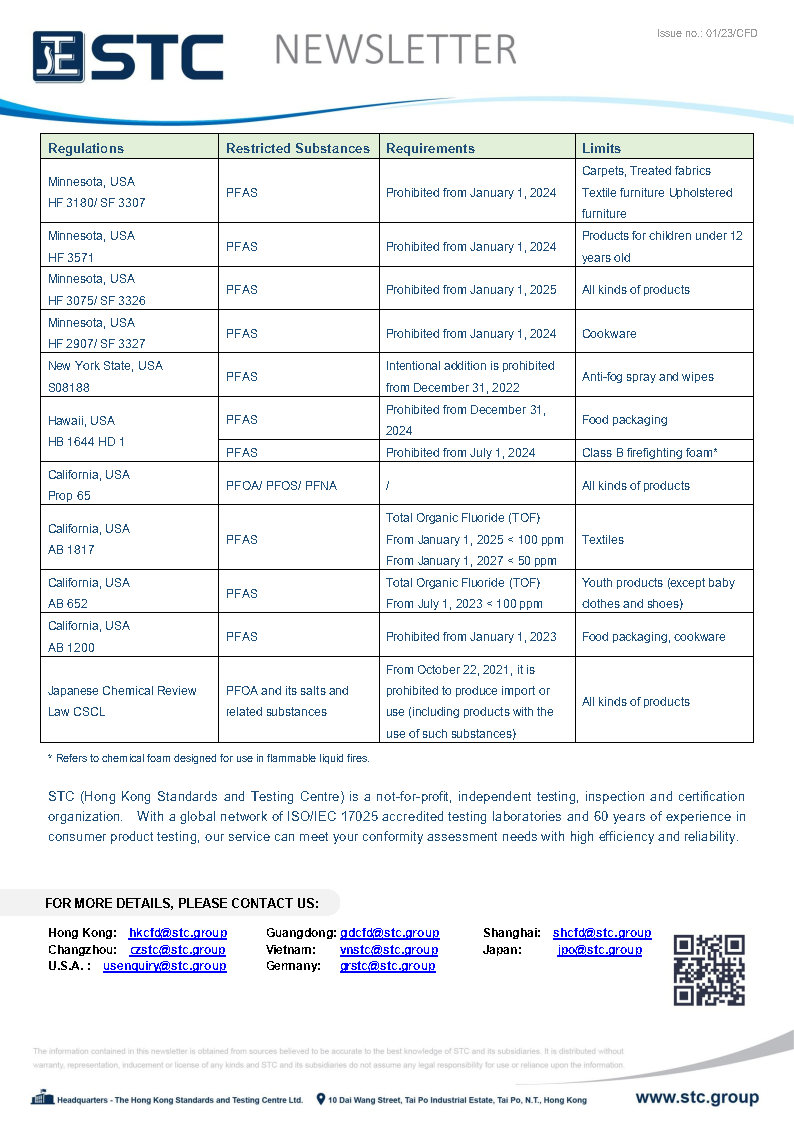Recently, several countries and regions have issued or drafted environmental regulations,all aimed at restricting the use of the same hazardous substance - PFAS (Per- and Polyfluoroalkyl Substances). The frequent legislative and regulatory trends aroundthe world have brought PFAS to the forefront of attention once again.
PFAS are organic compounds containing at least one perfluorinated carbon atom (i.e., containing at least one -CF2- or -CF3- chain structural unit). Due to their extremely stable fluorocarbon bonds, PFAS can impart oil, water, stain and mud resistance, chemical and temperature resistance, reduce surface friction, and obtain surface activity to products, and are therefore widely used in food packaging materials (food contact paper and paperboard), PCB boards and semiconductor electronic components, consumer products such as stain and water resistant fabrics and carpets, leather and clothing, non-stick kitchenware (e.g. Teflon), polishes, waxes, paints cleaning products and in fireproof foams.
PFAS are one of the most difficult organic pollutants to degrade found in the world, with high bioaccumulation capacity. When they are ingested by organisms, they are not enriched in fatty tissues, but are bonded with proteins in the blood, and accumulate in liver, kidney, muscle and other tissues, and show obvious bioconcentration.


















